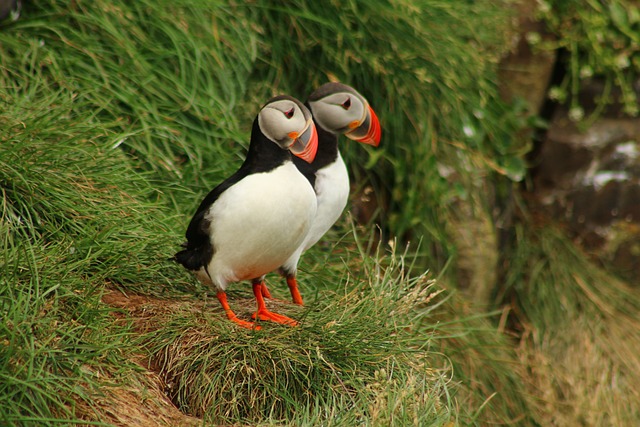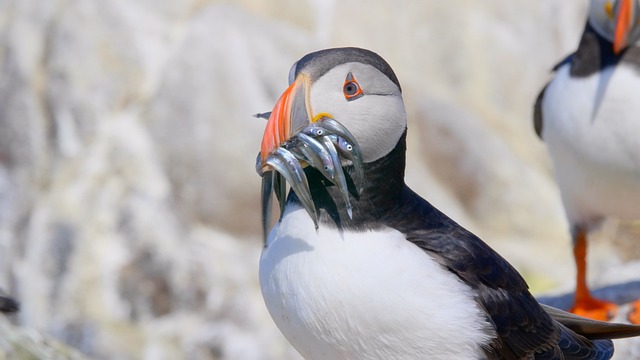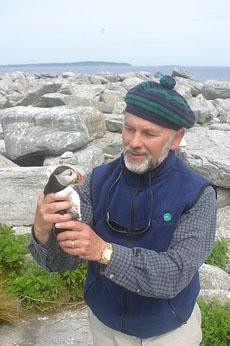 The U.S. state of Maine is well known for blueberries and lobsters - but puffins?
The U.S. state of Maine is well known for blueberries and lobsters - but puffins?
These seabirds are actually pretty popular, having a breakfast cereal named after them and a TV show focused on baby puffins, called pufflings.
However, 300 years of hunting for puffin feathers, eggs, and meat had caused their populations to go virtually extinct in Maine. Thanks to Project Puffin, their numbers have recovered significantly.
What’s special about these birds? Let’s get into it!
Puffins: Parrots of the Seas!
Known as sea parrots for their colorful beaks, Atlantic puffins are usually found in New England, Iceland, Canada, France, and several other European countries. There are two other types of puffins, the Horned and the Tufted puffin, but they are located in the Pacific region.
 Atlantic puffins have an average lifespan of 25 years, but the oldest one ever recorded was 36 years old! They have notched beaks, and each notch represents two years. This means if you can count the notches on a puffin’s beak, you can determine how old it is.
Atlantic puffins have an average lifespan of 25 years, but the oldest one ever recorded was 36 years old! They have notched beaks, and each notch represents two years. This means if you can count the notches on a puffin’s beak, you can determine how old it is.
Puffins have the ability to “fly” underwater, using their wings to propel them, and their feet to steer. They can dive up to 200 feet underwater but usually feed in shallow waters on small fish like herring and sandeel. The seabirds don’t spend a lot of time on land, but they do mate there.
Puffins are monogamous; in other words, they mate for life and stay together for over 20 years! These parents “imprint”, or teach pufflings to memorize particular creatures and locations during their first seven weeks of life. Then, puffins go into the wild to test their fate. At the age of two, they return to their birthplace during the breeding season but must wait until they are five years old to find a mate.
Restoring Puffin Colonies
 By the end of the 1800s, puffin colonies across six of Maine’s islands were reduced to several dozen breeding pairs. The pairs struggled to survive on Matinicus Rock but managed to sustain a small colony. In Iceland, the escape of American minks from mink farms decimated puffin numbers from the 1930s until today.
By the end of the 1800s, puffin colonies across six of Maine’s islands were reduced to several dozen breeding pairs. The pairs struggled to survive on Matinicus Rock but managed to sustain a small colony. In Iceland, the escape of American minks from mink farms decimated puffin numbers from the 1930s until today.
In the 1970s, a man named Steve Kress attempted to rebuild the dwindling numbers of puffins in Maine. He developed Project Puffin, a program to move pufflings from Newfoundland, Canada to Eastern Egg Rock Island in Maine. Previously, no one had successfully transplanted a colony of seabirds by moving chicks from one habitat to another. To encourage puffins to migrate to their new habitat, Mr. Kress positioned fake puffins, mirrors, and recordings of puffins to attract them to the islands.
Project Puffin catapulted puffin growth from 70 breeding pairs in the 1970s to more than 3,000 birds today, sprawled across Eastern Egg Rock, Seal Island, Petit Manan, and Matinicus Island.
Mimicking Kress’ experiment, scientists began raising pufflings in captivity and placing identification bands on their legs for monitoring (a process called “grubbing”.) His methods have also been widely applied to other seabird species, like the razorbill and common murre, which are cousins of the puffins.
Despite the successes, Maine's puffins continue to face challenges. Warmer ocean temperatures as a result of climate change have caused a decline in their food sources. Fortunately, puffins are a resilient species and are adapting to changes through their will to survive.
Sources: Smithsonian, Euronews, Union of Concerned Scientists, Birdlife.org, Hakai Magazine, Maine.gov, Audubon







